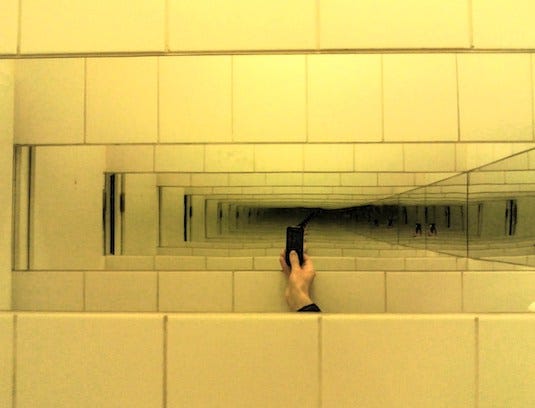Five Reasons Why Being Alone is Healthy
A list to share with your mom who wants you to make some friends already
Photo by Andrea Piacquadio from Pexels.
—
Sure, the Pandemic made us take a different look at the concept of being alone. And being locked up in our homes. And also breathing. But that’s all behind us now. Mostly.
What remains is rampant introversion, widespread social awkwardness, and large pockets of agoraphobia.
I’m here to ask: Is that so bad?
I’m also here to tell you that maybe it isn’t. Let me give you plenty of justification, er, reasons why being alone is great!
If I can do it you can too.
—
You never have to question who ate all of the pizza rolls
Also, no one judges you when you DoorDash oh-so-many more. None of this “Are you going to eat all of that?” and “Don’t you think you have a problem?”
No, eat and burn the roof of your mouth to your heart’s content, judgment free.
Plus, eating without judgment is healthy:
Showers? Eh, optional
You can wait to bathe until you are too funky for yourself and that bar is certainly higher than when someone else has to smell you. Saves on time, saves on water. Win-win.
Besides, showering less often is healthy:
In The Era Of Hygiene, ‘Clean’ Author Makes The Case For Showering Less
You can sleep in the middle of the bed
You can also sleep sprawled out like a starfish. Snore as much as you’d like with zero elbows to the ribs. Just you and as many pillows as makes you happy. You can have all of the blankets and all of the mattress, too. Embrace all that sleep. It’s beautiful.
Also, sleeping alone is healthy. Wait, that’s not actually what the research says. Hmm. Well, despite that, plenty of people still say they’d rather sleep alone:
In defense of sleeping solo: 60 percent of you prefer your own bed
Breaking wind. Passing Gas. Tooting.
This is the best benefit of living alone. We were all thinking it. I am just not ashamed to say it. And do it. Loud, proud, and without hesitation. No need to say excuse me. No holding it in or going to another room to let it out. No trying to silently squeak it out. No, your grandma was right: better out than in. Give it a little vibrato if you can. Be proud of your accomplishment.
In colloquial terms, let ‘er rip. It’s healthy:
Follow your creative pursuits without interruption
You can paint without judgment. Write without someone peering over your shoulder. Sing loudly without that pesky side eye. Yes, while alone you can really let yourself be and give over to The Muses. Creative pursuits take time and you can devote however much time you want when you are alone, no need to feel guilty about taking time away from family.
And in case you didn’t know, being alone might just make you more creative:
Do you need to be alone to be creative? Here’s what the experts say
—
Taken all together, I am pretty proud of the case I have presented here for the benefits of being alone. It’s great! Everyone should do it.
Separately and not together, I mean.
Okay, fine. Being alone does have its benefits but it also has some big drawbacks. When being alone becomes being lonely, that can cause some real mental and physical concerns. I think a lot of that has recently come to light during and now post-pandemic.
Here’s some analysis to consider:
Being Alone: The Pros and Cons of Time Alone
I hate to say that Mom may be right about you (and me) needing to get out of the house a little, but she may be right. That pains me to say.
I guess at the end of that day, it’s like the old saying goes:
All things in moderation.
Except pizza rolls. Those are no limit all day every day.
—
This post was originally published on Medium and more of my work can be found over there @karenfayeth.






